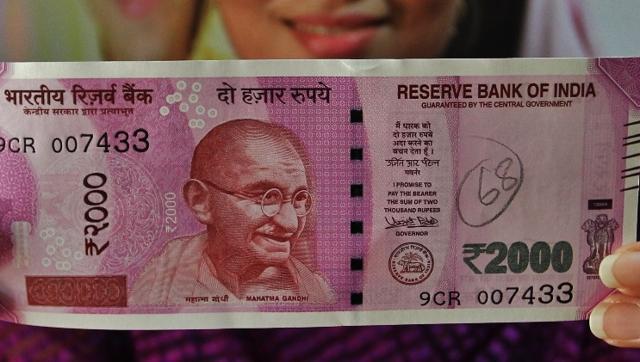While the nation grapples with PM Modi’s sudden announcement on Demonetization and the ensuing shortage of cash and long queues, the honorable High Court of Madras has directed the government to clarify under what authority it has printed Devanagari numerals on the new currency notes.
The new 2000 and 500 rupees notes have, in addition to English and other official languages of the Union, a separate Devanagari inscription, indicating the value of the currency, which was not the case with the notes in circulation so far.
This minor modification is capable of unleashing a Pandora’s box of issues as the language issue and the status of Hindi in India has traditionally been a political tinderbox.
A PIL filed in the Madras High Court claims that the new notes should be withdrawn from circulation as they are in contravention of the Article 343 of the Indian Constitution, which clearly states that the form of numerals to be used for official purposes shall be the International Form of Indian numerals. The article also states that the Parliament can by law provide for the use of Devanagari numerals after a period of 15 years of commencement of the constitution.
According to legal experts, the Parliament never framed any law granting equality to Devanagari and International numerals, which further complicates matters. Additionally, the government’s response that the Devanagari script was just a ‘design’ raises more suspicions rather than allay fears. The Court has given the government time till 28th November to prepare its response.
Madras High Court’s directive is pertinent at some level. There is a genuine fear among sections of Indians that there is a concerted attempt to shove Hindi down their throats. This, they fear will put them at a disadvantage against groups who are better-versed in Hindi, viz. North Indian communities. The other fear is that dominance of Hindi will devour indigenous culture and literature of different parts of the country and hence the forward march of Hindi must be resisted at all costs. There is an inevitable political angle to this as well. Generations of Indians, especially to the South of Vindhyas have been brought up on a virulently anti-Hindi discourse, thereby resulting in a potent mix of politics and emotions, which makes any attempt to popularize Hindi impossible, even to conceive. That having been said, can the Central Government or even the RBI be accused of spreading Hindi on the sly, by incorporating Devanagari numerals? Indian Currency notes, have in addition to the international form of Indian numerals, written description of the value of the currency in all official languages of the Union. Clearly, the existence of new notes will not hamper utility of the notes by coming in the way of comprehension of the value of note by non-Hindi speakers. The only issue that remains is the legal one.
Did the government and the RBI commit a major goof-up by contravening Article 343 of the Indian Constitution while printing the new currency notes. In addition to Article 343, an Official Languages Commission was set up to settle the issue of Official language for the Union. The Commission resulted in a Presidential Order that mandated the use of International Numerals in Scientific, Technical and statistical publications. Additionally, the order limited the use of Devanagari numerals to Hindi publications, if required. Incidentally, the PIL made in the Madras High Court also makes use of the Official languages Act, 1963 to make its case. The Official Languages Act, 1963 that ended the ambiguity in having an official language for the Union makes no mention of numerals and the script that should be used to write it. It will not be wrong to say that the government seems to be on a weak wicket in the case. While, it may get away on legal technicalities or by calling the Devanagari numerals, a design, there is no doubt that the government and the RBI did not do their homework properly. At a time, when the nation is grappling with the repercussions of Demonetization, this is one issue that the government could have done well to avoid.
That having been said, why should only Devanagari script feature on Indian currency notes. Surely, the government and the RBI could have been more creative. India is bestowed with many beautiful languages and equally beautiful scripts. One would surely not rue the presence of Telugu, Tamil, Kannada, Malayalam, Odiya, Bangla, Assamese or Gujarati or for that matter any other script. Especially, when the script is significant only as a ‘design’, many other Indian scripts would look equally if not more beautiful on the currency notes. One reason why India has failed to have a sole national language is because it has inevitably involved the imposition of one language on others. As PM Modi himself said recently, ‘All of us must learn and respect other Indian languages’. That is the way forward to assuage fears and build a national consensus for a common national language that unites people. The new currency notes can provide a great opportunity to take a small step in that direction.
